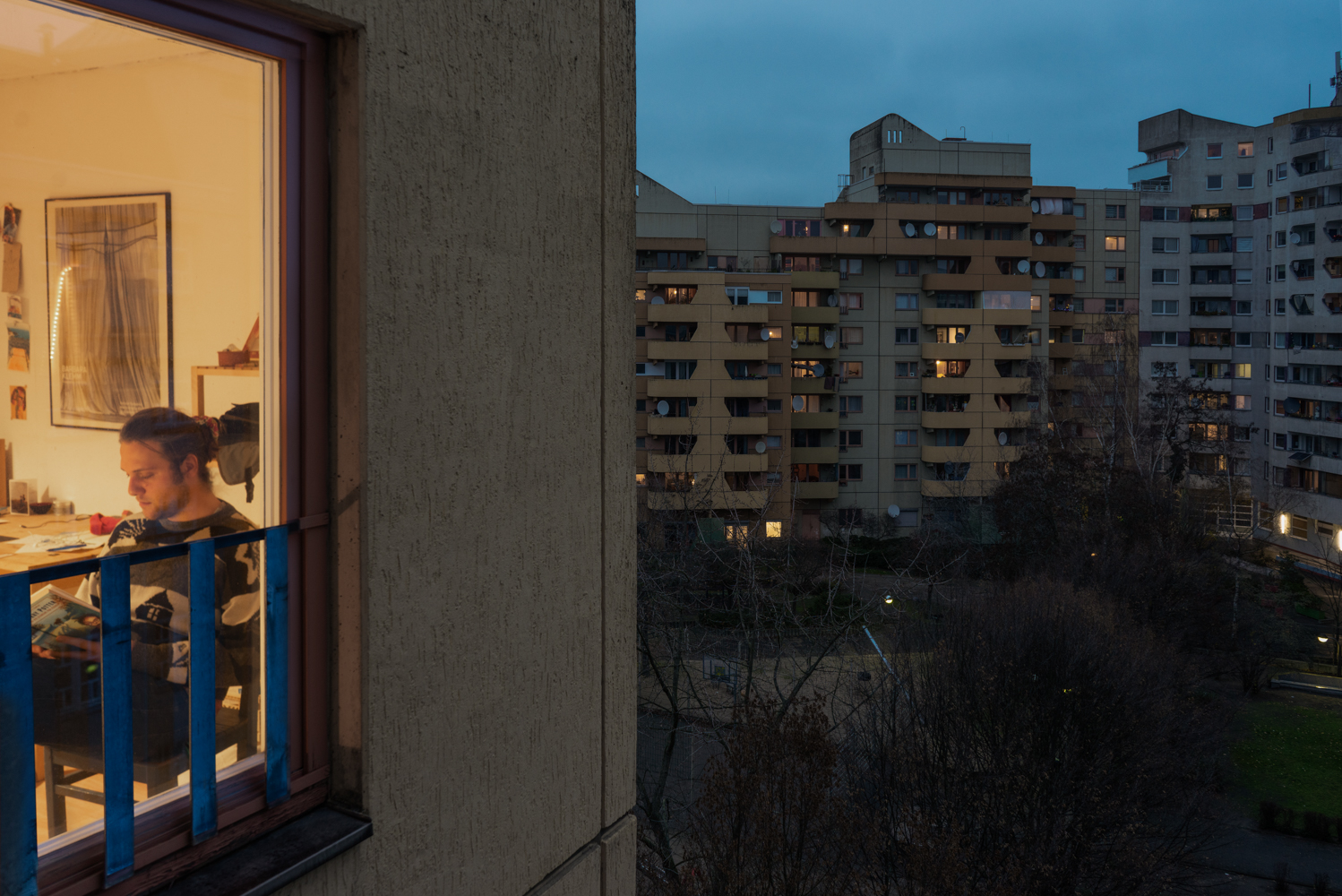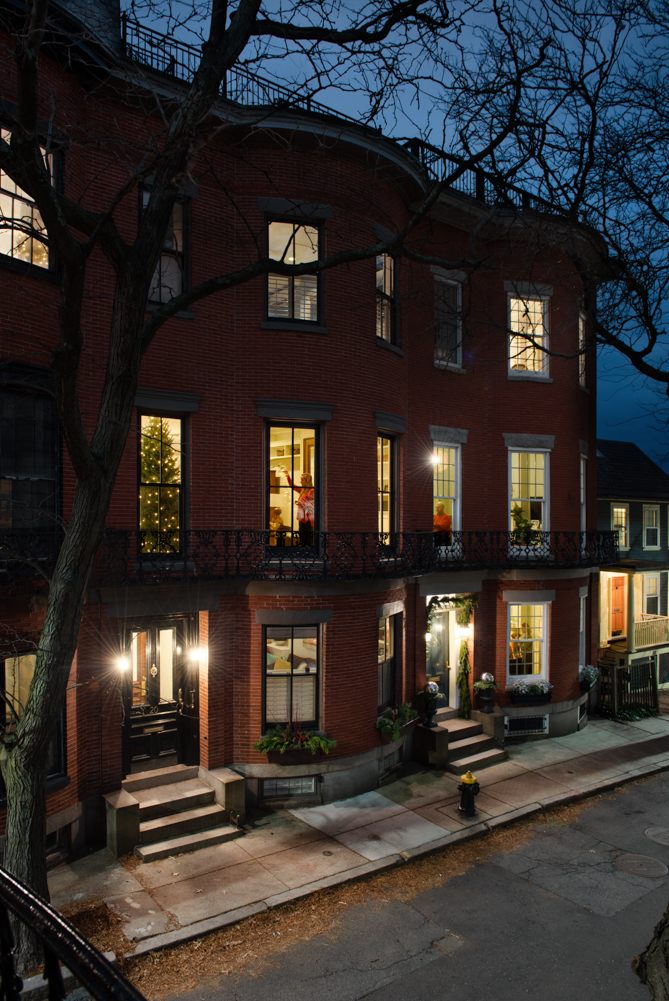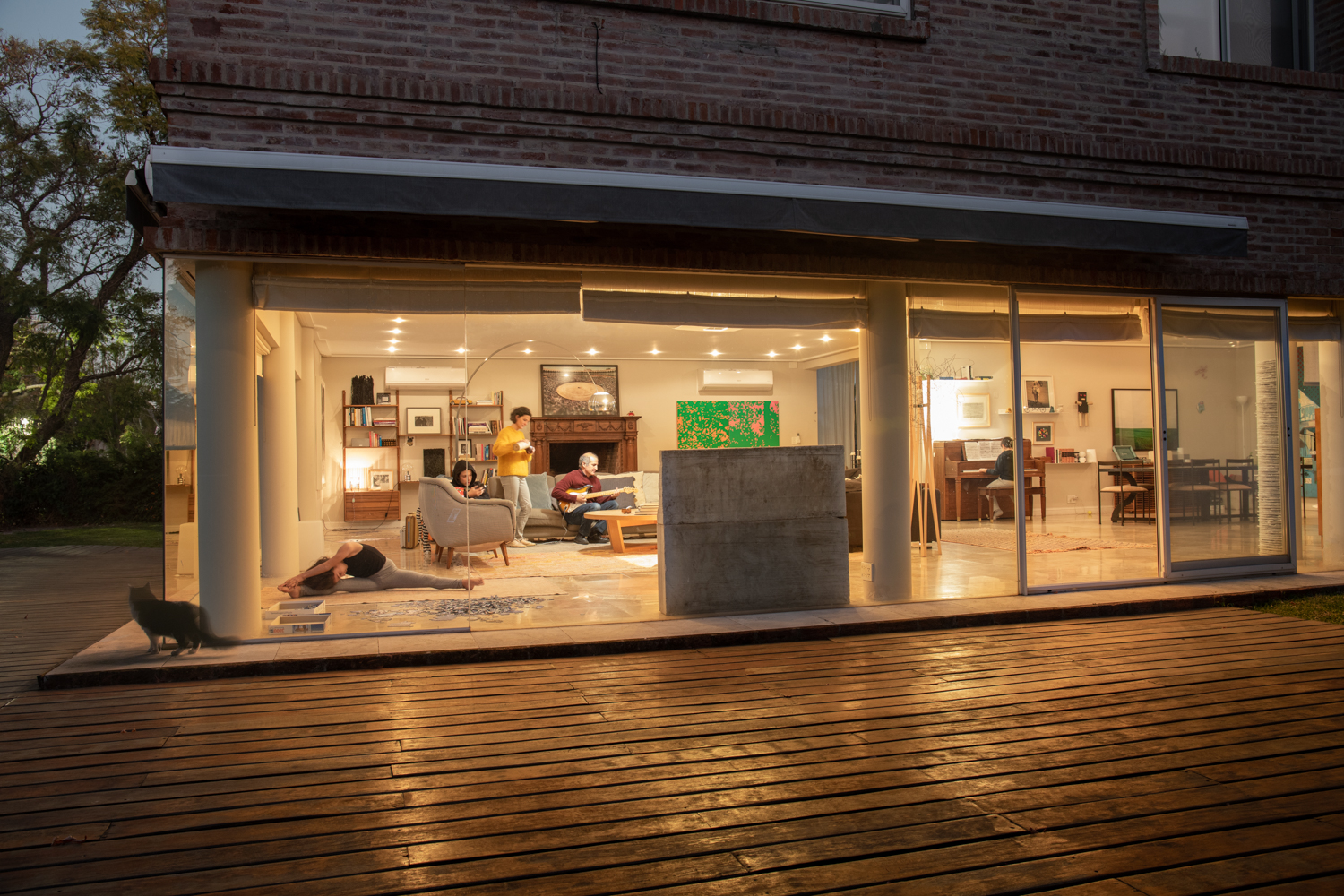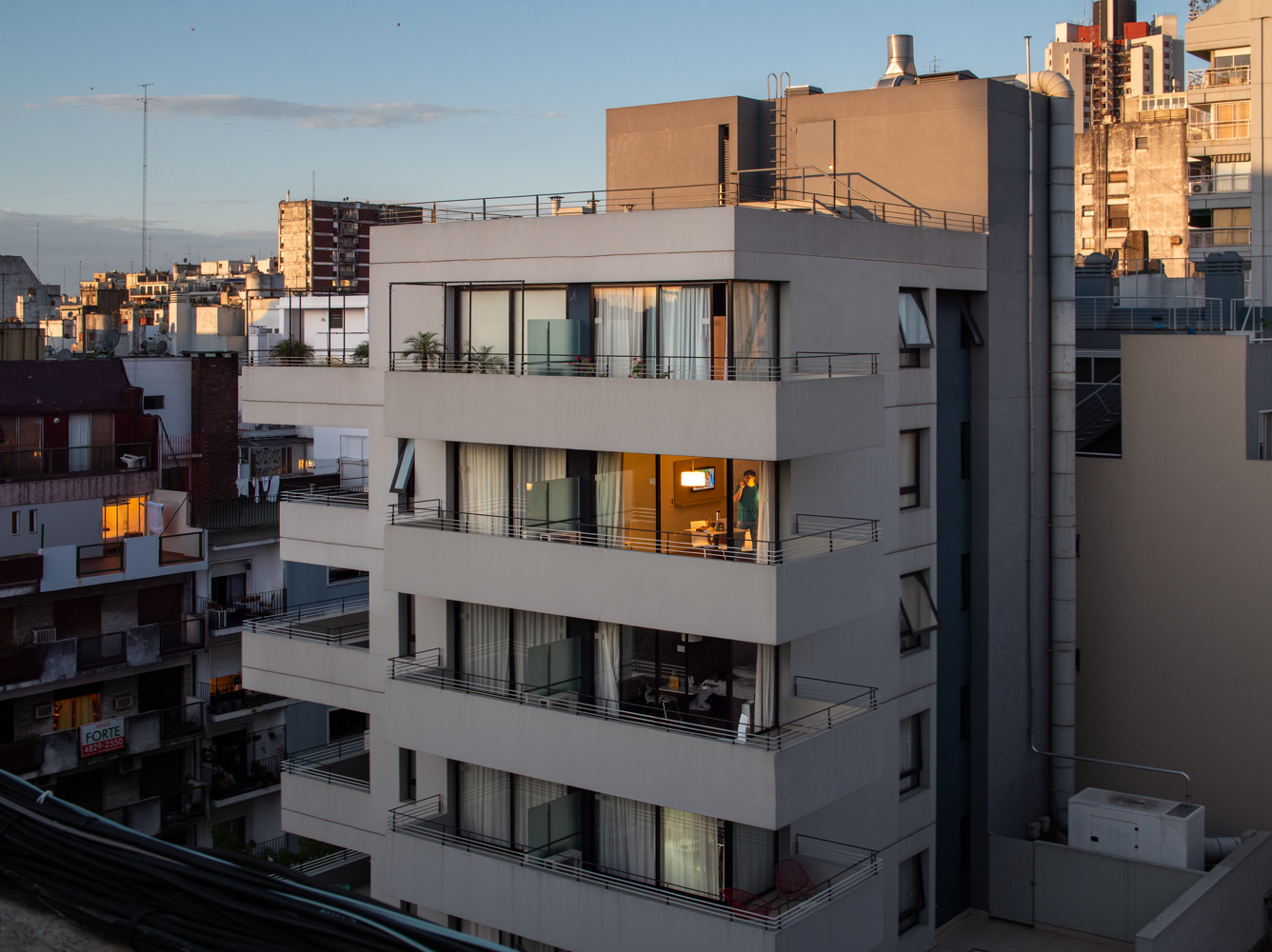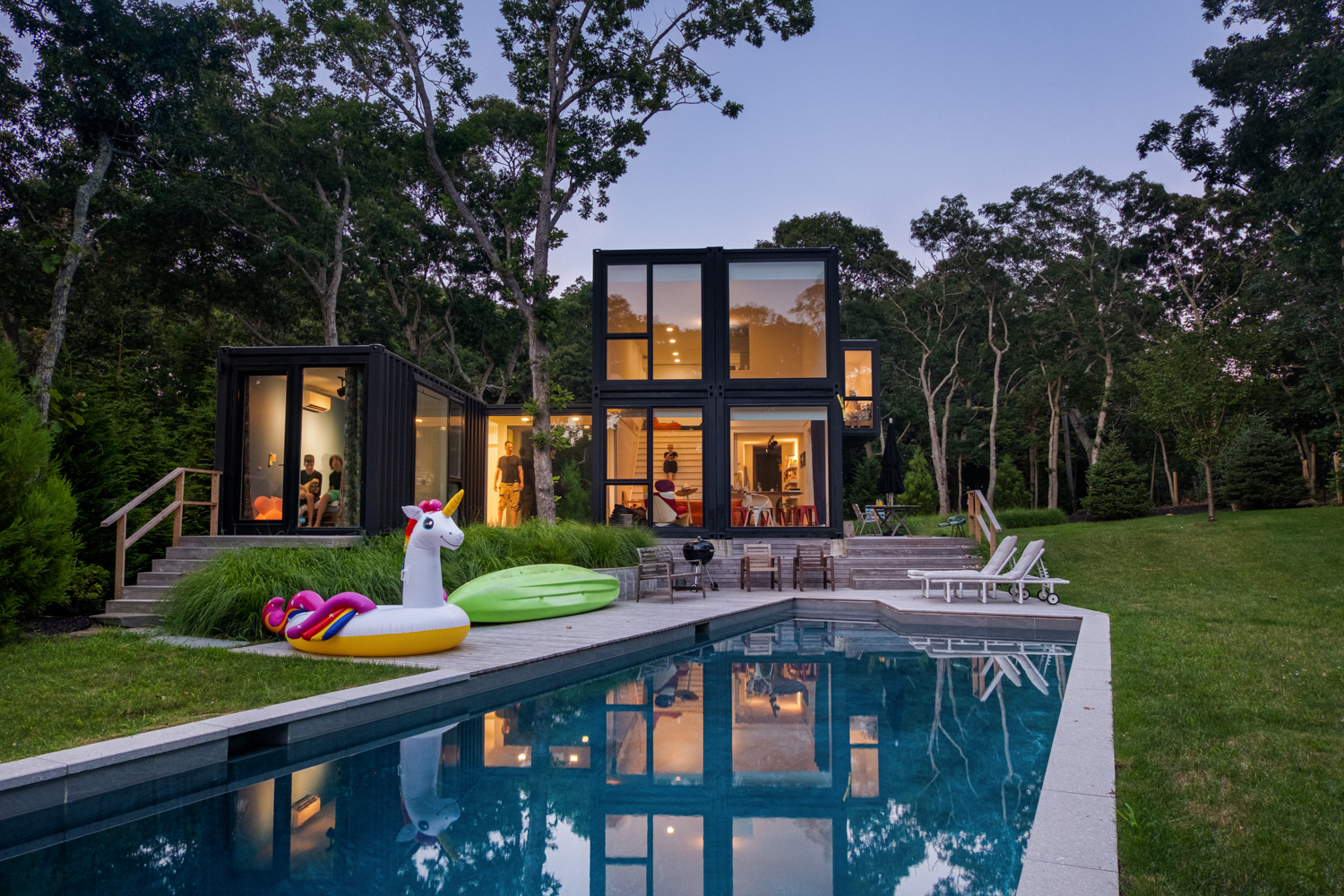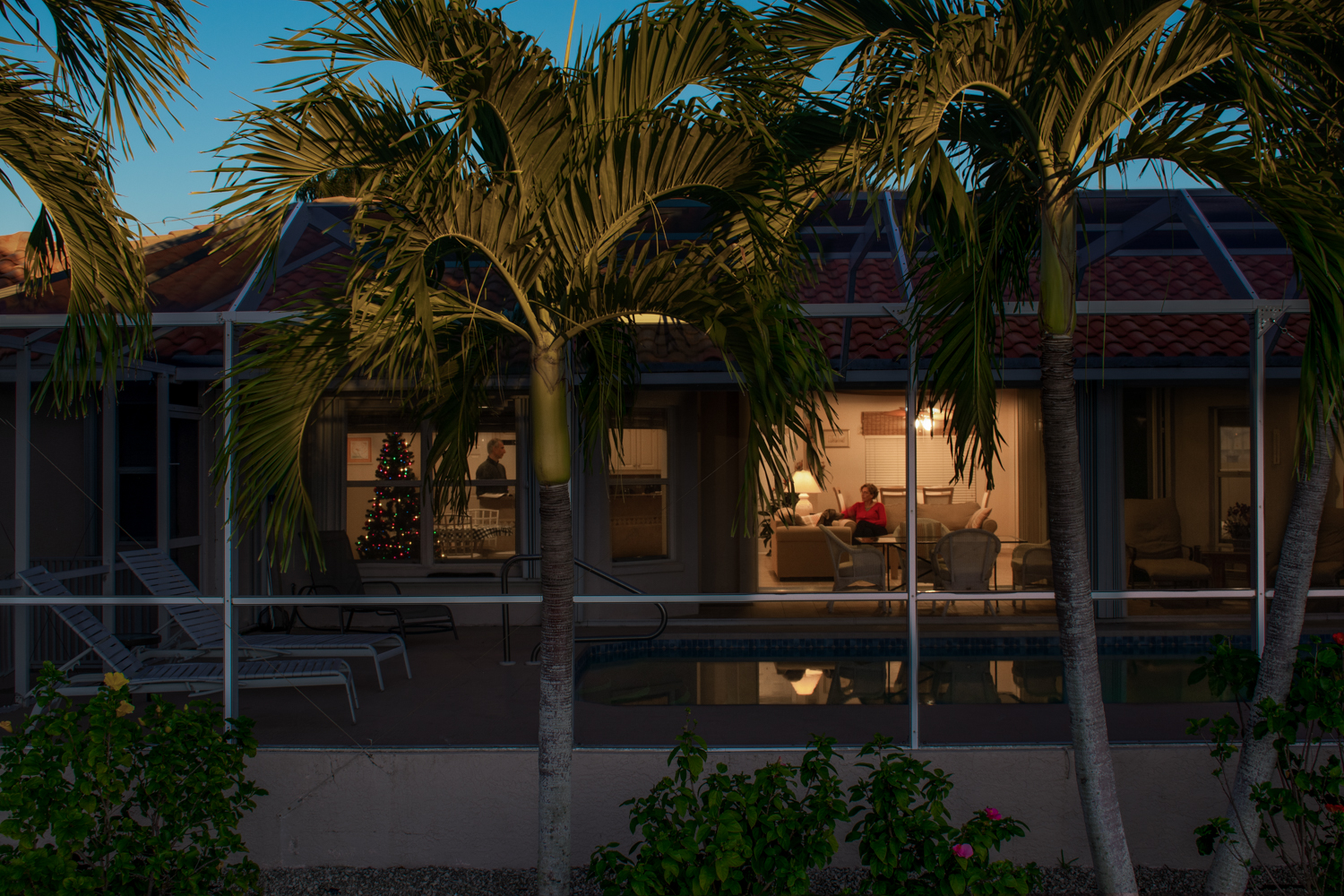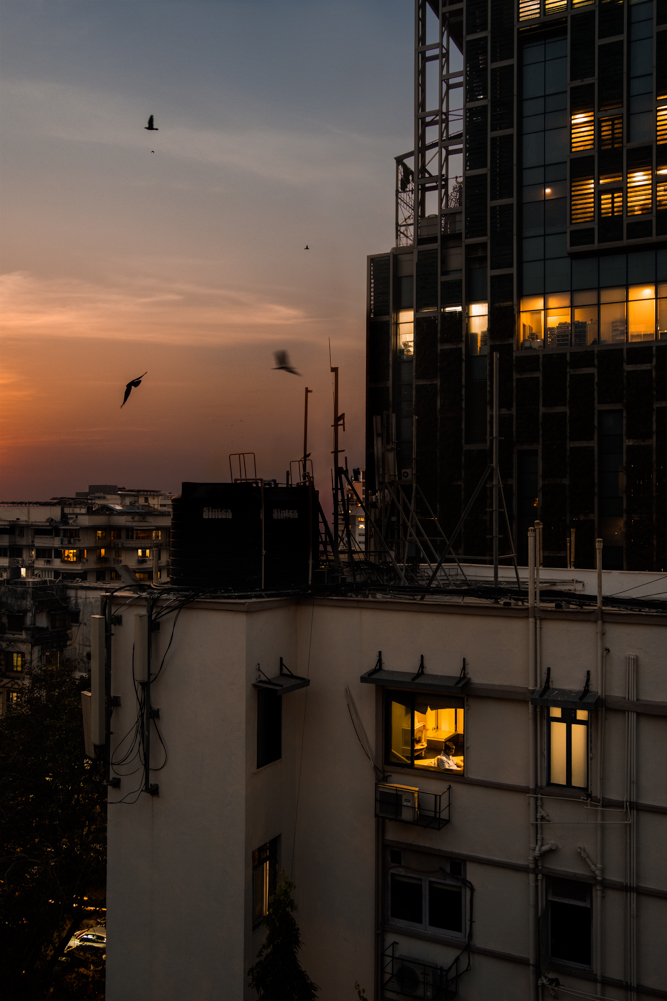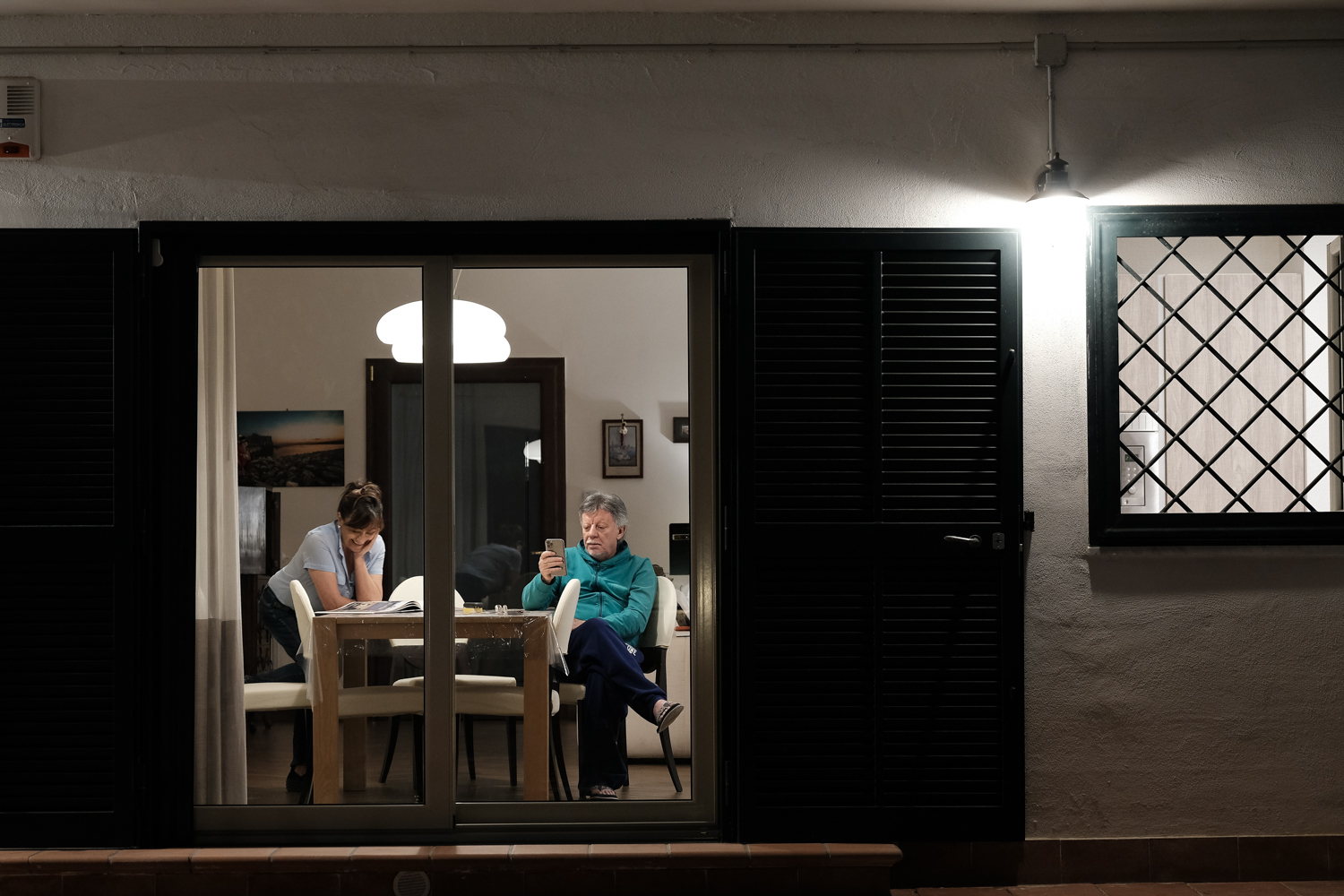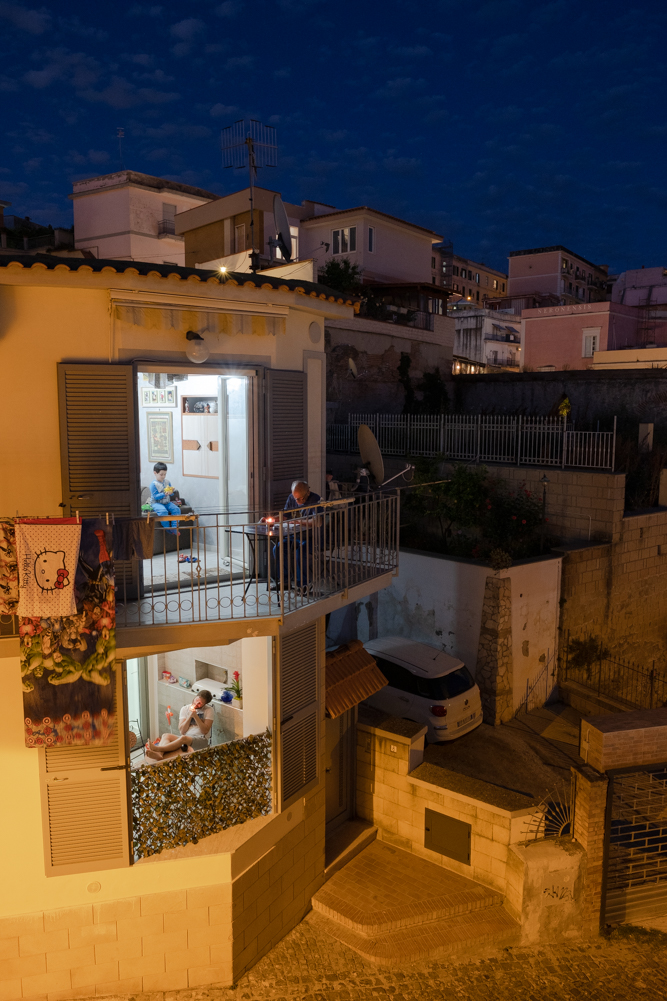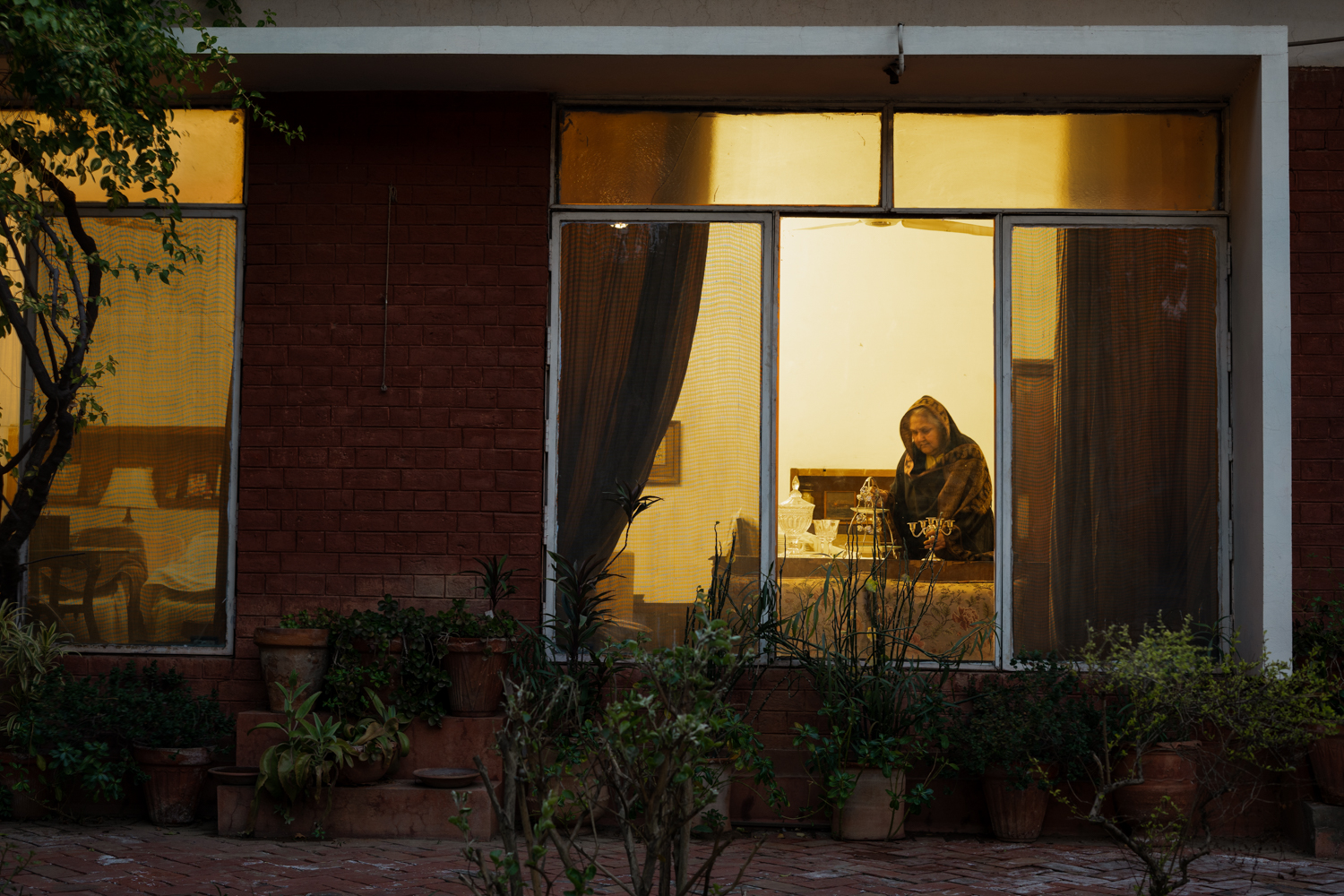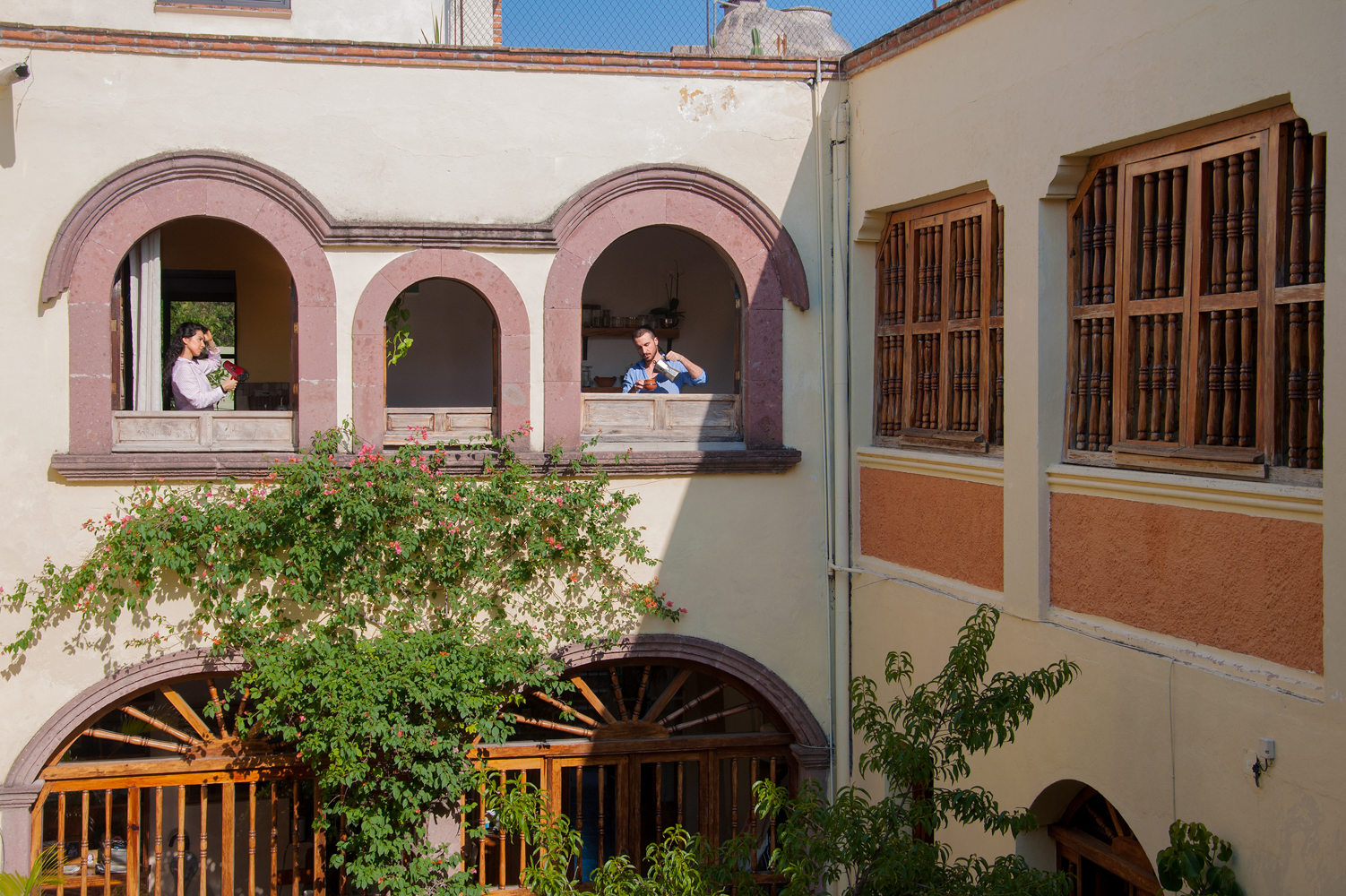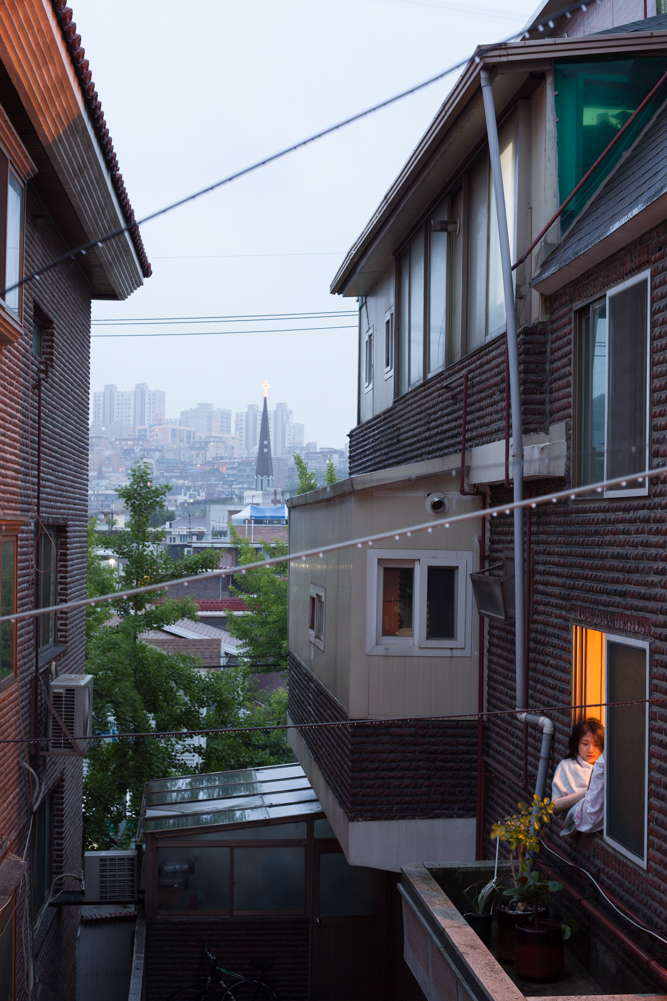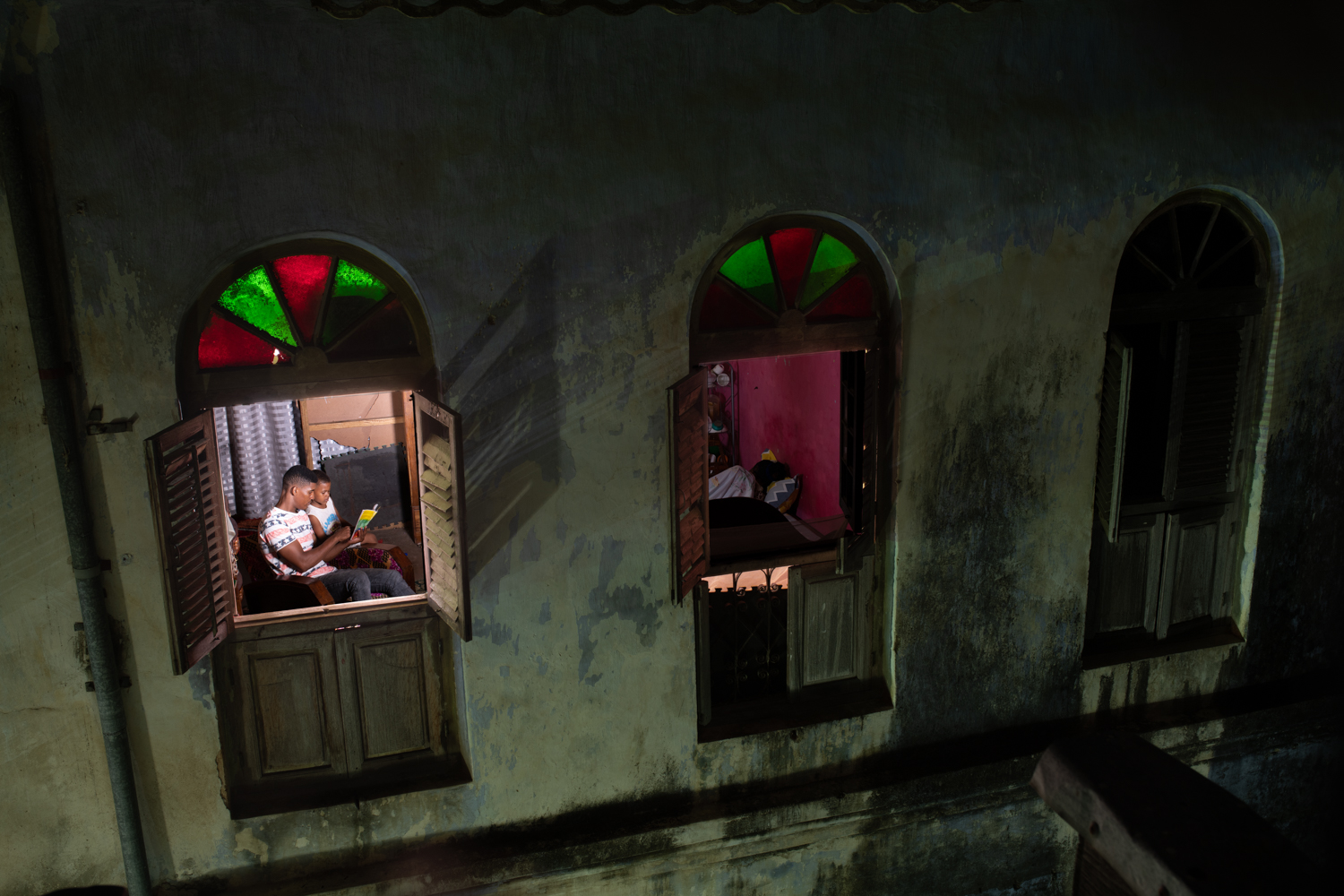Gail Albert Halaban: Out My Window
Although the world right now is in many ways isolated and divided, photographer Gail Albert Halaban finds hope in small moments of neighborly compassion. Through her ongoing, fifteen-year-long project, Out My Window, Albert Halaban fosters relationships around the world by photographing what neighbors see through their neighbors’ windows. “We’re feeling very disconnected right now, and if we just look at our neighbors and have relationships across the window space, it takes us out of these bubbles we’ve created for ourselves, and we realize that our neighbors’ lives aren’t that different than our own,” the artist told BBC in a July 2020 interview. While the series initially began in New York, technology has opened up the possibility to collaborate remotely with neighbors near and far. This process has been especially valuable since the onset of the Covid-19 pandemic, which has resulted in unprecedented circumstances of isolation around the world. “Even if I cannot travel, I can have another photographer in a different city set up a camera in their window, tether it to their computer, and share the screen. At the same time, I direct the shoot from my home in New York City,” said Albert Halaban. In 2020, as part of Out My Window, Global, an extension of her earlier series, the artist virtually collaborated with neighbors in Russia, India, Pakistan, Japan, Boston, Italy, Portugal, Germany, Poland, and Israel, to name a few.
The logistics of photographing remotely worldwide are not to be underestimated. Crossing cultures and time zones, facing potential language barriers and scheduling conflicts, Albert Halaban welcomes the challenge. The project has introduced and cemented relationships between neighbors and has even sparked romantic partnerships. Each city’s unique architectural landscape sets the stage for these fascinating narratives, encouraging people to consider their neighbors more thoughtfully and see the city around them from a new perspective. With an appreciation of cultural and geographic specificities, Out My Window, Global ultimately brings people together by illuminating our shared values, aspirations, and desire for human connection.
To participate in Gail Albert Halaban’s Out My Window project, please click HERE.
Gail Albert Halaban is an American artist born in 1970 in Washington, DC. She attended the Rhode Island School of Design, Brown University, and Yale University, from which she received a Master of Fine Arts in Photography. She has been published widely, including The New Yorker, The New York Times Magazine, and Le Monde. Gail’s photographs have been exhibited internationally, with her primary representation at the Edwynn Houk Gallery in New York City. The Aperture Foundation recently published her third monograph in Spring 2019. Public and private collections, including the Hermes Foundation, George Eastman Museum, Yale University Art Gallery, Nelson Atkins Museum, Cape Ann Museum, Wichita Art Museum, hold her work. Gail’s Website
PG: Since you began Out My Window, what has been the thing that has surprised you most?
GAH: At first, I thought people would think it was creepy to know that their neighbor was watching them, but most people admitted they were watching back. And everyone seemed to get a sense of community and neighborliness by watching and being watched – people are really generally friendly window watchers.
PG: When the pandemic hit, we witnessed photographers capturing images of people through windows sheltered in their homes. If someone is unfamiliar with Out My Window’s depth and breadth, they may assume the photographs were in response to the pandemic. Can you also discuss the impact COVID-19 had on the continuation of the series?
GAH: The work has gone on much longer than the pandemic, but the process has become much easier while everyone is stuck at home. It used to be harder to find people who were home enough at the same time as their neighbors and to schedule a shoot – now that we are all stuck at home, the production is simpler!
PG: Is it freeing to connect with people worldwide through screens and photograph from your home rather than physically planted behind your 4 x 5 view camera? The connections are limitless, but can you talk about the frustrations of having to manage all the moving parts simultaneously? Can you talk specifically about the logistics of recruiting subjects?
GAH: The trickiest part of the project is finding people all over the world to participate in the project. I need people who have some technical skills to figure out the exact moment that the interior and exterior light match, but once I find people, the connections are limitless. I have a chance to meet people in parts of the world that I have never been to. This month I have photographed in India, Pakistan, and Japan! It is really exciting to have this opportunity. In truth, I prefer to meet people face to face – there is an energy from the face-to-face connection that I can’t get working through a screen, but the opportunity for diversity of experience is worth it. Ultimately, I see the project as a combination of this remote shooting and face to face.
PG: It seems you visually divide the space of the frame with architecture, giving insight into each city or country the project takes place – Italy looks like Italy, and New York is New York. Is the architecture as crucial to the image as the people pictured in it? Do you try to contrast the warmth of humanity with the division of carefully divided exterior space intentionally, or is that inherent in making pictures of people?
GAH: Yes – the architecture serves as the stage for our domestic dramas. The form of that stage – the city’s architecture and the styling of people’s spaces narrates a lot of the theater.
PG: You have stated that this project has taught you, “Even alone, we need not be lonely.” Do you purposely have your subjects participate in ordinary activities during the shoot? Or do you position them in ways that make them appear more approachable?
GAH: The activities that are in the photographs are all based on what the neighbor doing the looking sees.
PG: In ways, it seems like you are a matchmaker – not with romantic relationships but with neighbors and community. Does that feel like an important responsibility? Does it always go well?
GAH: In 15 years – it has gone pretty well – led to friendships, babysitting gigs, dates – and even an engagement. I haven’t heard anything except positive relationships forming!
PG: Many people consider large cities to be the loneliest places to live. How is it that you came to have a different view?
GAH: In a big city – there are always new people to meet. You just have to leave your apartment, and then there are millions of people! How can that be lonely?
PG: You’ve mentioned that your project may at first seem voyeuristic and/or creepy. I think about Hitchcock’s movie, Rear Window, where Jimmy Stewart’s “Jeff” (also a photographer) is confined to his Manhattan home as a thrilling narrative, and murder mystery unravels. Many of us look into people’s windows and, at times, consider if there is something sinister or shady going on in there. Your subjects open themselves up to each other voluntarily. How have you created a platform for openness within the confines of private space with your subjects? Do they have preconceived ideas of the neighbors they meet and then find their assumptions validated or untrue
GAH: Unlike in Hitchcock, I think if most of us look at our neighbors -we will see that their lives are pretty much the same as our own. Murders are not what we usually see when we look out the window. One family told me that they met their neighbor – who they had watched for years – when the apartment caught fire and they ran out. The opposing neighbor came out to help, and they even had the family stay at their apartment that night. But that is an outlier – usually, people just see their neighbors doing everyday domestic things.
PG: Do you see Out My Window as a project you will continue throughout your life? What is the satisfaction you feel from years of this journey through windows?
GAH: It is funny, I keep thinking I am going to be done – but then I meet more people in different places and hear the stories of their lives and want to keep going. Now, I have been collecting stories of what the neighbors see when they look into their neighbor’s windows – it is such a fantastic way to stand in the shoes of someone else and experience their lives -so it will continue.
PG: You’ve already published three books with this series. What is your ultimate goal?
GAH: I want a book that covers the globe! I have been in museum exhibits in Korea, France, Italy, New York – and California – but I hope to have a broader reach.
PG: Overall, what has this project taught you about humanity?
GAH: We all crave to connect with each other!
Polly Gaillard is a writer, educator, and fine art photographer. She holds a Bachelor of Arts in Journalism and a Master of Fine Arts in Visual Art. For more than ten years, she has taught workshops and college courses that include photography, art history and writing. Her features and interviews with artists and photographers have appeared in print and online publications like Lenscratch, All About Photo, and various photography gallery blogs. Polly writing offerings include artist statements, book reviews, interviews, features, press releases, exhibition proposals, website, and newsletter content. She also provides publicity strategies, plans, and consultations. Polly Gaillard Communications website
Posts on Lenscratch may not be reproduced without the permission of the Lenscratch staff and the photographer.
Recommended
-
Earth Month Photographers on Photographers: Tyler Green in Conversation with Megan JacobsApril 15th, 2024
-
Luther Price: New Utopia and Light Fracture Presented by VSW PressApril 7th, 2024
-
Emilio Rojas: On Gloria Anzaldúa’s Borderlands: The New MestizaMarch 30th, 2024
-
Artists of Türkiye: Cansu YildiranMarch 29th, 2024
-
Artists of Türkiye: Sirkhane DarkroomMarch 26th, 2024

